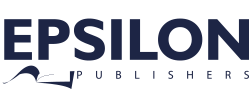Redefining our understanding of persons with disabilities
The theme for International Day for Persons with Disabilities, 2024 by the United Nations is “Amplifying the Leadership of Persons with Disabilities for an Inclusive and Sustainable Future”. This theme highlights the importance of including persons with disabilities as leaders in all aspects of society. However, before we can even consider creating leadership spaces for them, we must rethink how we define disability. Disability is not just a medical condition. It requires recognising abilities over limitations, employing an intersectional approach and recognising that many of the challenges people with disabilities face come from society’s failure to accommodate their diverse needs.
Traditional definitions often focus solely on medical conditions, but disability is more than just a diagnosis—social, economic, and environmental factors shape it. Traditional definitions focus on impairments or what a person “cannot do.” However, disability is also influenced by social barriers, such as inaccessible buildings, discrimination, and lack of inclusive education or employment opportunities. A person in a wheelchair, for example, is not “disabled” because of their condition alone. If public spaces are fully accessible, their mobility challenge is significantly reduced. Additionally, instead of saying a child is “disabled by their condition,” we recognise that lack of accessible schools, inclusive learning, and supportive policies are what truly disable them.
While medical definitions help identify specific support needs, they often limit how we see individuals. When children with disabilities are labelled only by their condition, such as “autistic” or “physically disabled,” people may focus only on their challenges instead of their abilities and leadership potential. Moving beyond labels means shifting our perspective. Instead of defining individuals by what they cannot do, we should focus on what they can do. For example, a child with dyslexia may struggle with reading but may also be highly creative and an excellent problem-solver. When we remove restrictive labels, we create opportunities for persons with disabilities to participate fully in leadership, education, and employment. This shift supports the International Day of Persons with Disabilities theme because it allows individuals to take on leadership roles based on their talents and aspirations, not just their disability.
When we define disability purely based on limitations, we ignore a person’s strengths, talents, and potential. Moving beyond rigid labels allows people with disabilities to be seen as contributors, leaders, and innovators rather than just individuals in need of support. We should understand that disability does not exist in isolation. Gender, race, class, and geography all influence how a person experiences disability. A rural child with a disability may face different challenges than an urban child with the same condition, requiring different types of support. A broader, more flexible definition can address these diverse realities.
Furthermore, a girl with a disability in a rural village may face more barriers than a boy with the same disability in a city. She might struggle with the lack of accessible schools, cultural biases, and poverty. Without recognising these multiple layers of challenges, efforts to promote leadership for persons with disabilities may leave some people behind.
A person’s identity, potential, and worth are not solely defined by their life conditions, challenges, or past experiences. People have strengths, abilities, dreams, and intrinsic value beyond their difficulties. Moreover, humans are resilient and can rise above their circumstances with proper education, opportunities, and perseverance. This axiom allows us to recognise that persons with disabilities are more than their medical conditions. They have unique strengths, talents, and leadership potential. Moving beyond labels ensures that individuals are seen for their abilities, not just their disabilities.



